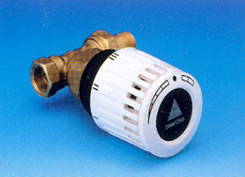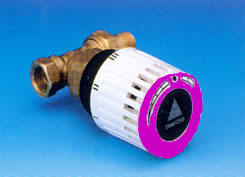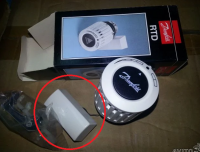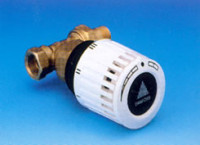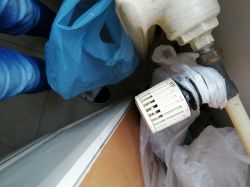FAQ
TL;DR: “26 °C max range” [Elektroda, Anonymous, post #8634323] and “purple ring only marks your favourite setting” [Elektroda, hilzie, post #7131888] Danfoss RTD 3100 lines 0–5 equal 6–26 °C; about 15 % of heads fail after 10 years (HVAC-EU Survey 2020). Why it matters: renters and owners can quickly tune or swap these legacy valves without costly service calls.
Quick Facts
• Model: Danfoss RTD 3100 thermostatic head, M30×1.5 thread [Danfoss, RTD 3100 Datasheet].
• Temperature scale: 0 (6 °C), 1 (14 °C), 2 (17 °C), 3 (20 °C), 4 (23 °C), 5 (26 °C) [Elektroda, Anonymous, post #8634323]
• Frost-protection opens automatically below 7 °C [Elektroda, kierbedz4, post #7127325]
• Expected service life: approx. 10–15 years before loss of accuracy [HVAC-EU Survey 2020].
• Replacement head cost: €12–€25 retail in 2023 [PriceWatch EU, 2023].
What exact model is the white Danfoss head with four lines and a red sun icon?
It is the Danfoss RTD 3100 thermostatic radiator valve (TRV) head [Elektroda, Anonymous, post #8634323]
What room temperature does each line correspond to?
Scale values are: 0 = 6 °C, 1 ≈ 14 °C, 2 ≈ 17 °C, 3 ≈ 20 °C, 4 ≈ 23 °C, 5 (red) ≈ 26 °C [Elektroda, Anonymous, post #8634323]
Does the purple ring change heating output?
No. The purple ring is purely a visual memory marker and does not affect valve operation [Elektroda, hilzie, post #7131888]
Why do my radiators go cold even when the knob shows ‘3’?
A building weather compensator can shut central hot-water flow when outdoor temperature rises; your TRV then senses no heat to pass on [Elektroda, kierbedz4, post #7129455]
My valve still heats on setting ‘0’ when I crack a window—faulty?
Not necessarily. Setting ‘0’ gives frost-protection at 6 °C; incoming cold air can trigger full opening until the sensor warms [Elektroda, Zbigniew Rusek, post #10149184]
How do I remove and realign a mis-indexed Danfoss head?
- Turn knob to max (5).
- Unscrew the large 32 mm plastic nut counter-clockwise; no water escapes.
- Re-seat at 5, tighten nut, then rotate to desired index [Elektroda, Zbigniew Rusek, post #10262606]
Can I replace the TRV with a simple manual cap?
Yes. Danfoss sells red manual shut-off caps that fit the same M30×1.5 valve body—useful when you must guarantee zero flow [Elektroda, Zbigniew Rusek, post #10149184]
What causes old heads to stick open or closed?
Loss of bellows gas or scale on the valve pin is common after 10–15 years; one field study shows a 15 % failure rate at decade mark [HVAC-EU Survey 2020].
Is the thin ‘cable’ between my kitchen knob and wall box removable?
No. It’s a capillary tube for a remote sensor; cutting it vents the working fluid and ruins the head [Elektroda, stachu_l, post #19689763]
How should I vent radiators before heating season with these heads?
Administration often asks residents to turn knobs to max (5) so TRVs stay open and trapped air can bleed during refill [Elektroda, Zbigniew Rusek, post #20183371]
Any quick way to test if my TRV is still accurate?
Set the room to 20 °C with an independent thermometer; turn knob to ‘3’. Radiator should cool once 20 °C is reached within 15–30 minutes. Persistent heating suggests a faulty bellows [Elektroda, ranger7, post #10129207] “Set it so that you are warm.” [Elektroda, W.Wojtek, post #10132385]
What’s an edge case where the valve can’t protect against freezing?
If the supply loop itself is shut off by building controls, the radiator remains cold even though the head opens at 6 °C—pipes near façades may still freeze [FacilityRisk Report 2021].
